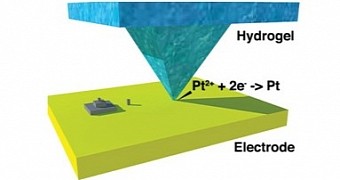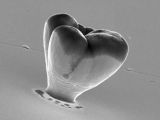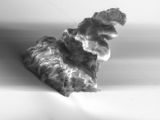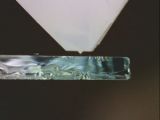We've written about several 3D printing pens so far, from the original 3Doodler to models that use not FDM but a variation of SLA to harden ink with light, like the Polyes. Now, a new pen has been created, one that is in a league of its own.
We do not hand out praise lightly, but the hydrogel pen for electrochemical reaction (HYPER for short) created by a team of scientists from South Korea is astonishing in its ability to create small structures.
In fact, “small” might not be a strong enough word. Infinitesimal works a lot better, considering the scale of things.
It's not every day that a pen is made which has the ability to draw nanites, or at least structures that don't measure more than 100 nm. Yet that is what the new hydrogel pen can do.
The hydrogel nanoscale 3D printing pen
The HYPER does not use normal fused deposition modeling (FDM), stereolithography (SLA), or selective laser sintering (SLS).
That last one hasn't been adapted for this form, and may never be. It doesn't make much sense to do it considering that the materials have to be spread over a platform in powder form, in advance.
The technique that the new 3D printing pen employs is actually a combination of three other elements: dip-pen lithography developed by Chad Mikin of Northwestern University (USA), nanopipettes built by Patrick Unwin at the University of Warwick (UK), and micro-nozzels developed by Jennifer Lewis from Harvard University (USA).
The tip is a microscopic hydrogel pyramid soaked in an electrolyte that produces an electrochemical reaction when it makes contact with an ultramicroelectrode. Specifically, a faradaic reaction that enables electroplating.
The contact area is nanoscopic, and because of that, so is the resulting structure. Precision in the pen's application is ensured by a nanopositioning system.
The structures you see in the attached gallery are platinum deposits made on a gold electrode, none of which measure more than 100 nm.
Seongpil Hwang and his team from the Korea University developed the pen as an alternative to nanopippettes for localized electrochemical reactions. They have been able to create thin films in a cheaper, environmentally sound way, all the while increasing reliability.
The fact that the structures are three dimensional is a boon as well, considering that most electrodeposition techniques yield mostly one-dimensional nanowires.
Finally, the hydrogel that the pen is made of is easier to manufacture than the glass nanopipettes, all the while offering a high precision level thanks to its exact geometry.
Practical applications
Materials scientists from the University of Oxford and other high learning institutions in the world are interested in the HYPER hydrogel pen, and the steady-state currents resulting from the pyramid shape. Electrodes will probably be the first things made with it, but electrochemistry, nanoscience and 3D printing will benefit in other ways as well.

 14 DAY TRIAL //
14 DAY TRIAL // 


